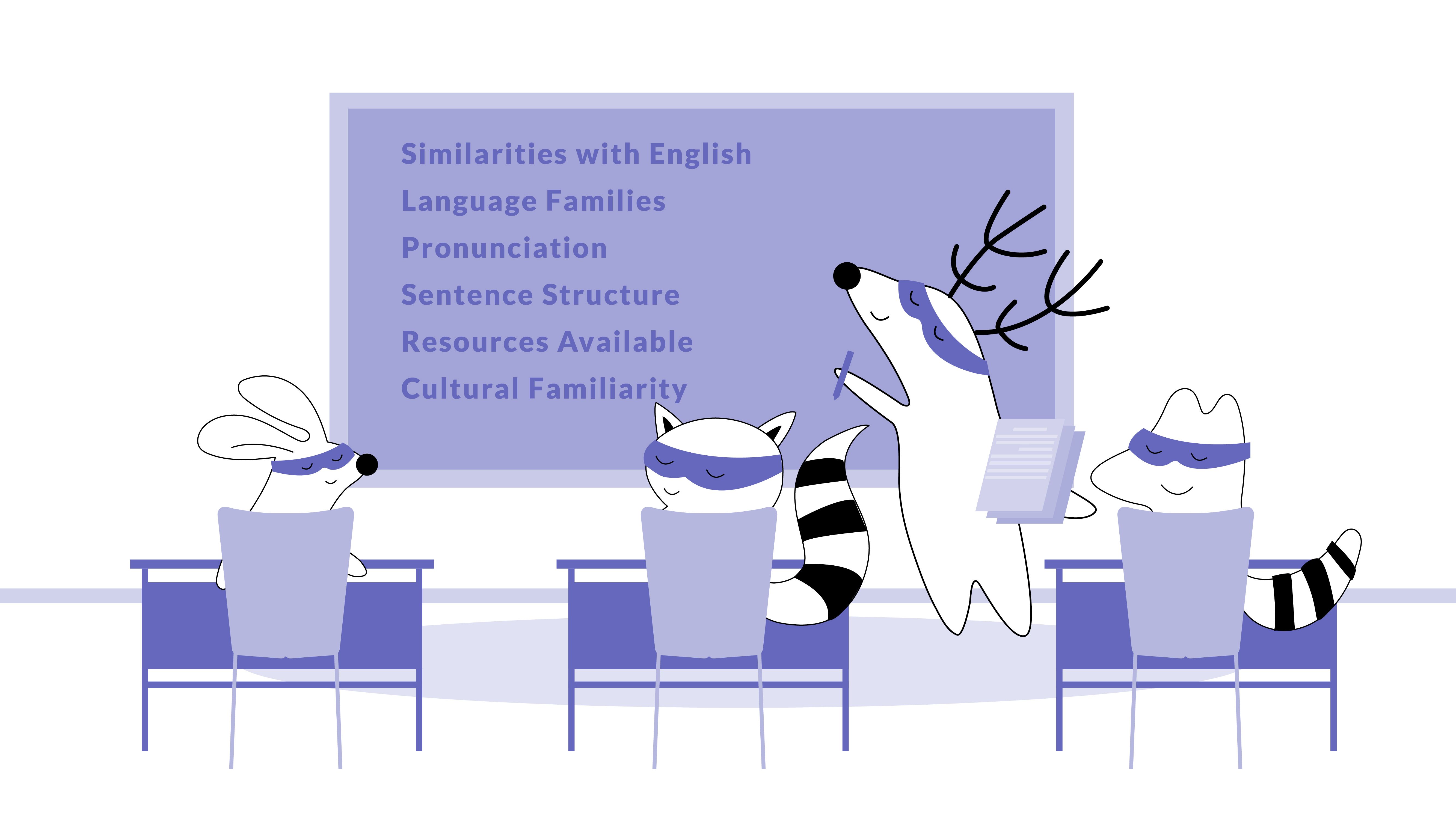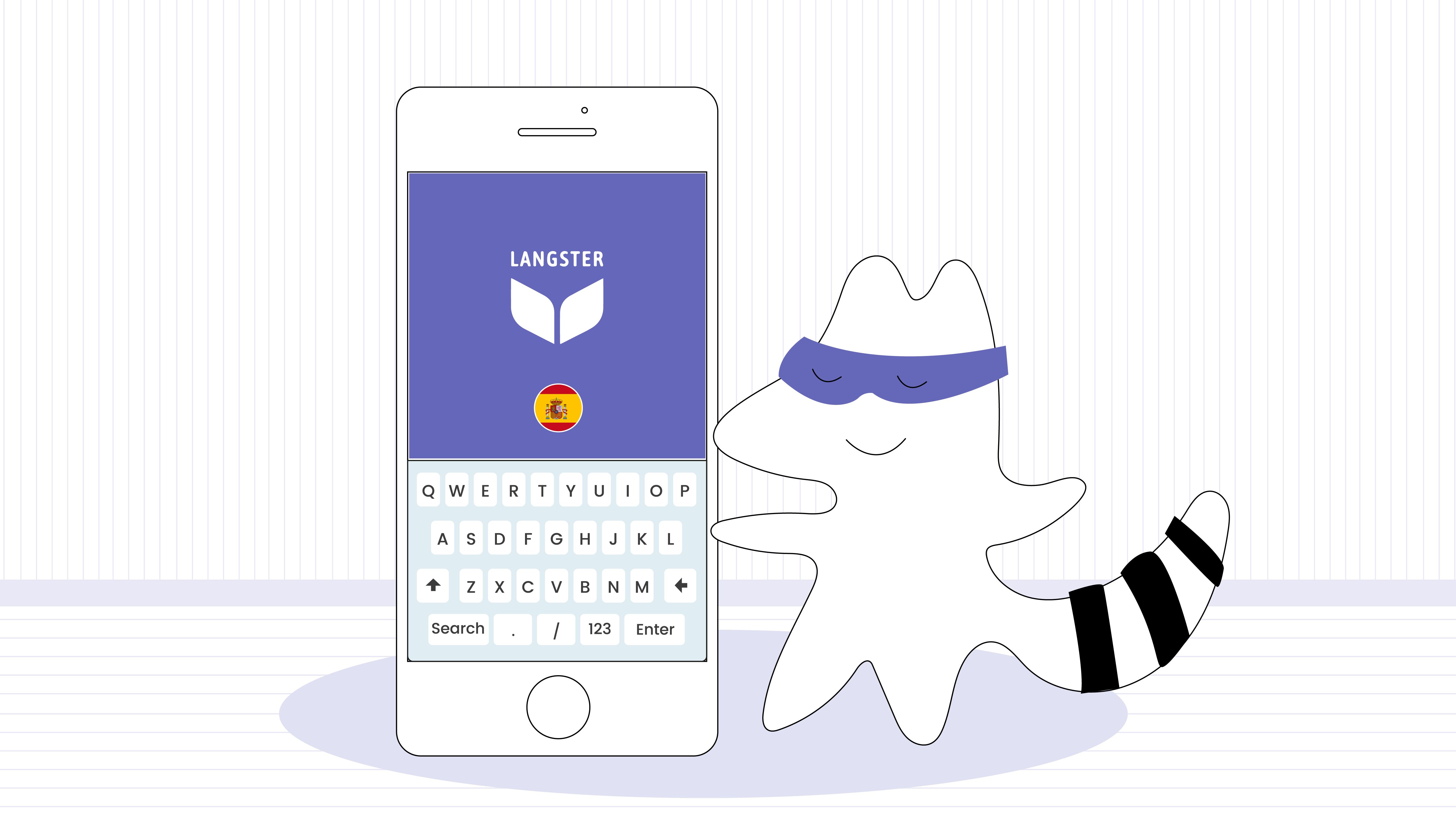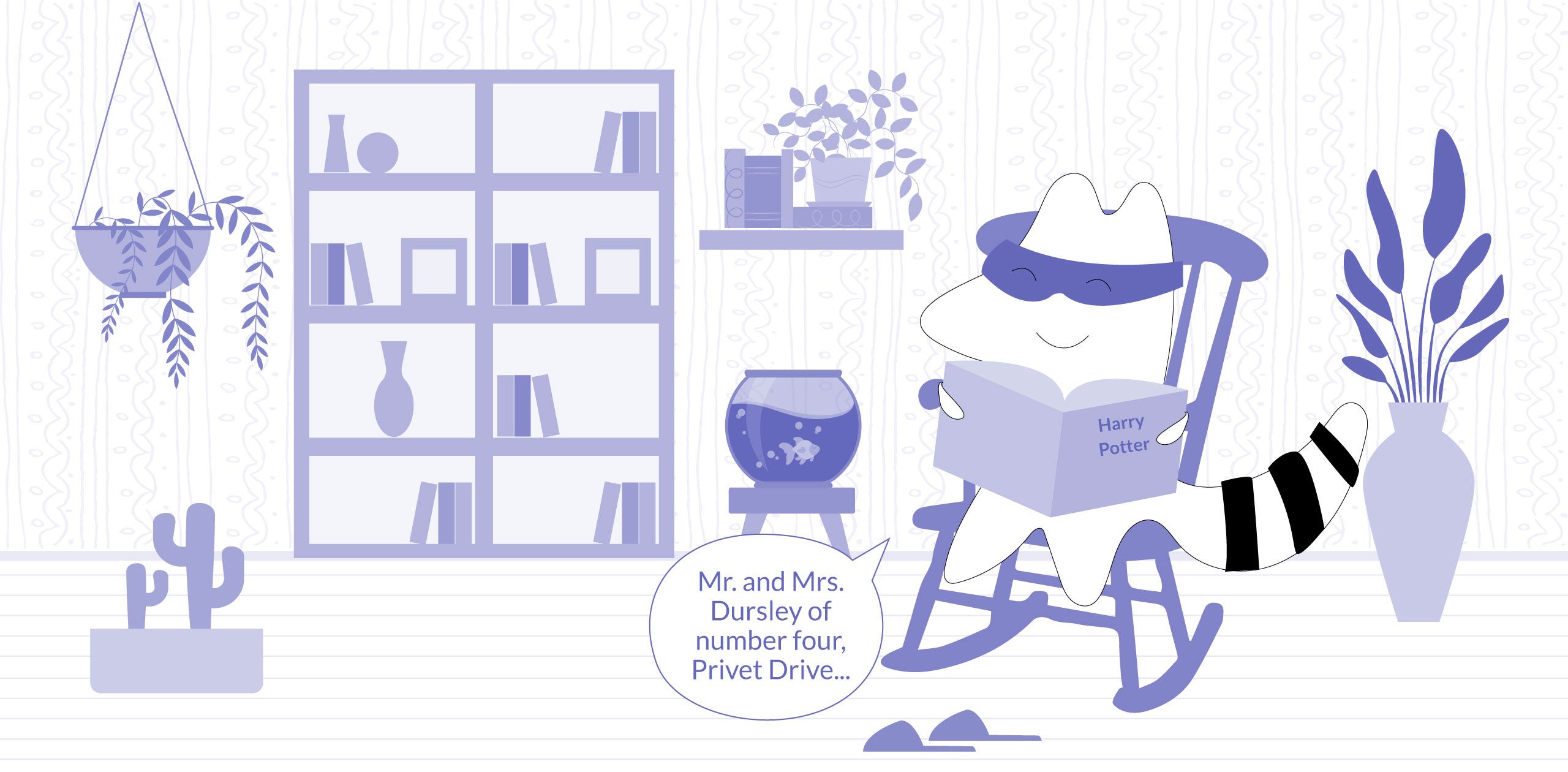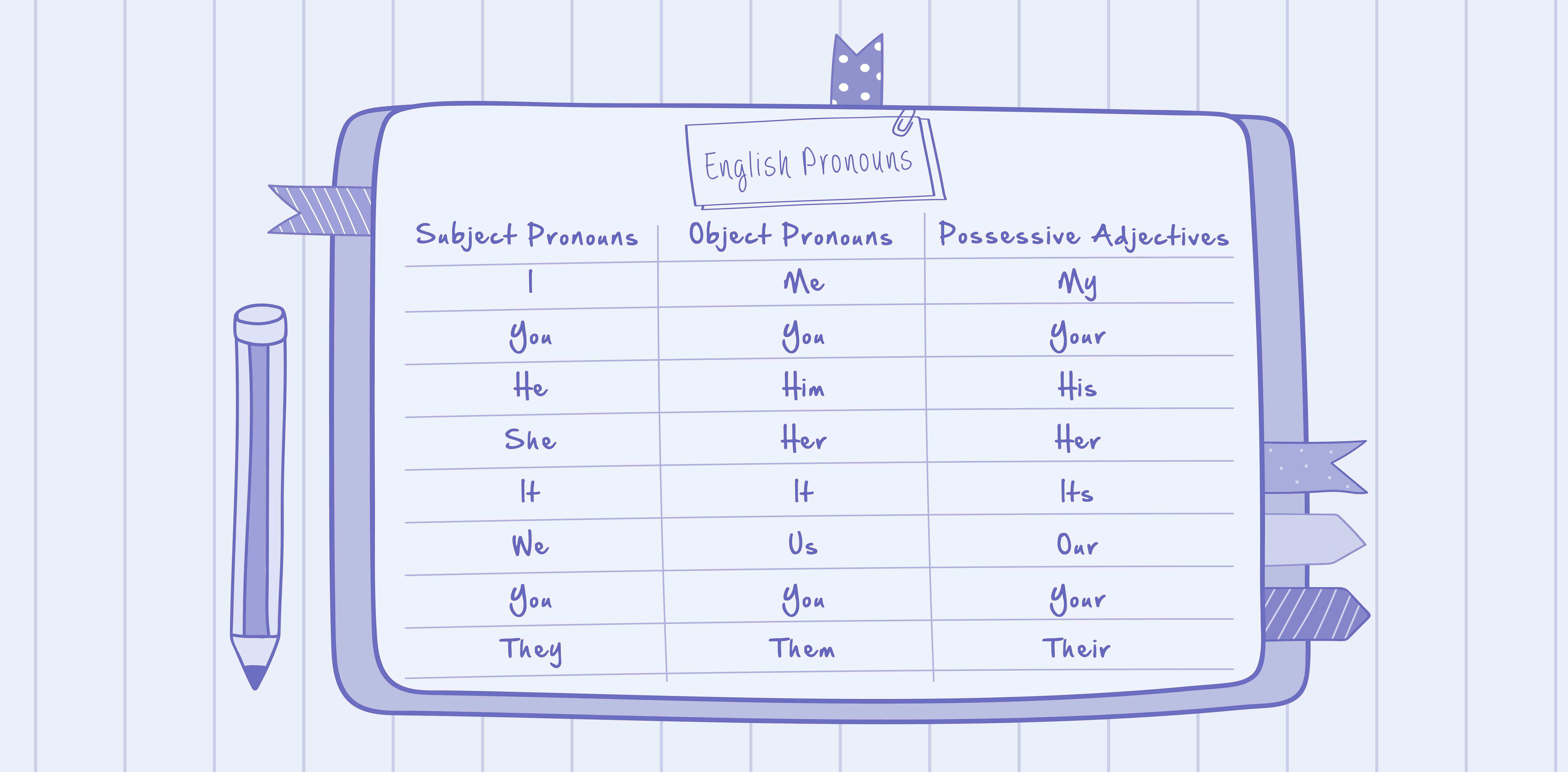
As an English speaker, have you ever toyed with the idea of learning a new language?
While it may seem daunting at first, it's important to remember that not all languages are created equal when it comes to ease of learning for native English speakers. Some languages share common roots, structures, or vocabulary with English, making them substantially easier to pick up.
In this article, we will draw back the curtain on what makes a language easy to learn for English speakers. We'll explore various aspects that can affect the learning curve, such as linguistic similarities, language structures, and shared vocabulary.
Furthermore, we will delve into specific languages that are typically easier for English speakers to learn, including Norwegian, Swedish, Dutch, Spanish, and Portuguese — and provide an estimate of how long it might take to achieve fluency in each of these languages.
Stay tuned for an exciting linguistic journey!
Learn English with Langster
What Makes a Language Easy to Learn for English Speakers?
Before we dive into the list of languages, it's important to understand what makes a language easy or difficult for English speakers to learn.

While every language has its unique complexities and challenges, there are some key factors that can make a language easier to learn:
Similarities with English
One of the main reasons a language can be considered easy for English speakers to learn is if it shares similarities with the English language. This can include verb conjugations, shared vocabulary or writing system, and similar sentence structure.
For example, Spanish and Portuguese both share many words with English and have relatively simple grammar structures compared to other languages, making them some of the easiest languages to learn for English speakers.
Pronunciation
Another factor that can make a language easier to learn for English speakers is pronunciation. Some languages, like Norwegian and Swedish, have phonetic alphabets that are similar to English.
This means that the letters are pronounced in a similar way as they are in English, making it easier for English speakers to recognize and pronounce words.
Language Families & Structures
English speakers often find languages from the Germanic and Romance families easier to learn because English is a Germanic language with a significant influence from Latin and French, which are Romance languages. This is why Dutch, German, Swedish, Norwegian, Spanish, French, and Italian are often recommended for English speakers.
The structure of a language can also play a role in its difficulty for English speakers. Languages within the same language family as English, such as Dutch and German, can be easier to learn compared to languages with vastly different structures, like Chinese or Arabic.
Cultural Familiarity
Cultural familiarity also plays a significant role in language learning. If you are already familiar with certain cultural aspects or features of a language, it can make learning that language a lot easier.
For instance, an English speaker might find Spanish easier to learn because of its prevalence in popular culture, music, and food.
Availability of Learning Resources & Immersion Opportunities
Another factor that impacts the ease of learning a language is the availability of learning resources.
Since English is the most widely spoken language in the world, finding understandable learning materials for a variety of languages shouldn’t be a problem. However, some languages are more popular and will have more learning materials available than others.
When there are plenty of study materials, language learning apps (Langster, for one, offers stories in French and Spanish — both languages are on this list!), online tutorials, and language exchange communities available in their target language, it’s much easier for language learners to study and practice.
For instance, English speakers will find an abundance of resources for languages such as Spanish, Portuguese, Dutch, and Swedish.
Furthermore, the opportunity for immersion can significantly speed up the learning process. If there are communities that speak the language nearby, or if you can travel to a country where the target language is spoken, it offers a tremendous boost.
For English speakers in Europe, learning languages like Dutch, German, or Spanish could be easier due to proximity and the possibility of immersion, while for English speakers in the United States, the proximity to Canada and Latin America means the same principle applies to Spanish and French (although it’s a regional dialect).
9 Easiest Languages for English Speakers to Learn
Now that we have a better understanding of what makes a language easy to learn for English speakers, let's take a look at some specific languages that fit the bill.
Keep in mind that these are generalizations, and individual learning experiences may vary.
Norwegian

Norwegian, belonging to the Germanic family of languages, often rises to the top of the list when considering the easiest languages for English speakers to learn.
One primary reason is its remarkable structural and lexical similarities to English. The sentence structure in Norwegian mirrors that of English in many ways, making it less challenging for English speakers to comprehend.
In addition, Norwegian and English share a large number of cognates (words that have a common etymological origin), further simplifying the language learning process.
Another factor that works in favor of English speakers is Norwegian pronunciation. The phonetic alphabet in Norwegian is similar to English, making it relatively less daunting for English speakers to pronounce the words correctly. Moreover, Norwegian grammar is reasonably straightforward, with fewer exceptions compared to English.
According to the Foreign Service Institute (FSI), an English speaker can achieve fluency in Norwegian with about 600 class hours or approximately 24 weeks of intensive instruction. However, this may vary based on individual aptitude and learning circumstances.
Swedish
Swedish, a North Germanic language, is primarily spoken by 10 million people, predominantly in Sweden, and by a minority in Finland, where it co-exists as the second official language.
Owing to its Germanic roots, like Norwegian, Swedish is considered one of the easier languages for English speakers to learn. The pronunciation might pose a minor challenge initially, but persistent practice can overcome this hurdle.
Swedish boasts relatively simple grammar rules and sentence structures, thereby making it less intimidating for English speakers.
However, learning Swedish does come with a few unique challenges, such as mastering the three extra vowels not present in English. Furthermore, you will need to familiarize yourself with compound words that, while logical, might feel unfamiliar to an English speaker.
According to the FSI, an English speaker can achieve fluency in Swedish with approximately 600 class hours or around 24 weeks of intensive instruction.
Dutch
Dutch is another Germanic language that is considered relatively easy for English speakers to learn. It's predominantly spoken in the Netherlands and a significant portion of Belgium, making it the third most-spoken Germanic language after German and English. This is probably due to its shared vocabulary that makes Dutch sound like a blend of German and English.
An intriguing characteristic of Dutch is the high number of words spelled identically in both Dutch and English, more than in almost any other language. However, this similarity can be a double-edged sword, as these words are often pronounced differently in Dutch.
Additionally, there are false cognates to be aware of, such as the Dutch word wet, which translates to "law" in English. Despite these minor hiccups, if approached with diligence, Dutch can be a rewarding language for English speakers to learn.
According to the FSI, an English speaker can achieve fluency in Dutch with about 600 class hours or approximately 24 weeks of intensive instruction.
It's noteworthy that Germanic languages occupy three of the top four spots on our list while English's other relatives, German and Danish, are missing.
German, although it shares thousands of cognates with English, falls short due to its complex grammar and is far from being described as an "easy” language. Danish, on the other hand, does resemble Norwegian and Swedish in its written form, but its pronunciation can be quite challenging for casual learners.
Spanish
Moving away from the Germanic languages, Spanish is a Romance language and is known to be one of the easiest for English speakers to learn due to its practicality and extensive reach.
For one, as one of the Romance languages, which have their roots in Latin, Spanish shares a multitude of cognates with English.
Spanish is also a very phonetic language, meaning words are pronounced as they are spelled, making it relatively straightforward for English speakers to read once they’ve got the rules.
However, learners need to be aware that Spanish does possess numerous verb tenses and exceptions to grammar rules that might be confusing initially. The good news is that these tenses closely align with those in English, making them easier to grasp than anticipated.
Perhaps the strongest argument for learning Spanish is its prevalence in our everyday lives. Recent statistics rank Spanish as the second most-spoken language globally, boasting over 496 million native speakers.
Chances are, you've encountered Spanish in TV shows, radio broadcasts, and community interactions. Its ubiquitous presence provides English speakers with an advantageous start in their language-learning journey.
According to the FSI, an English speaker can achieve fluency in Spanish within 600-750 class hours or approximately 24-30 weeks of intensive instruction.
Portuguese
Around 250 million people worldwide speak Portuguese, reinforcing its status as an incredibly useful second language. As the official language of Portugal, Brazil, and six African countries such as Angola, Cape Verde, and Mozambique, its influence spans over multiple continents.
Like Spanish, Portuguese has Latin roots and employs the same alphabet as English, providing English speakers with a slight head start in their learning journey.
However, potential learners should be aware of the distinct Brazilian Portuguese. These variations encompass pronunciation, vocabulary, and even grammar rules, making the two versions unique in their own right. The choice between European and Brazilian Portuguese should align with your intent and location of use.
The FSI estimates that an English speaker can expect to achieve fluency in Portuguese with about 600-750 class hours or approximately 24-30 weeks of intensive instruction.
Indonesian

This one may also come as a surprise, but Indonesian has several qualities that make it a logical choice for English speakers. For starters, Indonesian — spoken natively by nearly 42 million people (and by almost 200 million people in general!) — is one of the few Asian languages that uses the Latin alphabet.
Many Asian languages are incredibly difficult for English speakers to master due to the unfamiliar characters in their writing systems, but not Indonesian. It’s also another phonetic language on our list!
While Indonesian grammatical structures are very different from those in English, it’s actually good news! Its lack of rules makes learning grammar a lot easier. There are no verb conjugations or gendered nouns (that’s right!) and no plurals — all you need to do is simply repeat the word twice.
The FSI estimates that an English speaker can expect to achieve fluency in Indonesian with about 900 class hours or approximately 36 weeks of intensive instruction. However, this is mainly due to the time needed to familiarize oneself with the different language structures.
Italian
Italian, another Romance language, is an attractive choice for English speakers seeking to learn a new language. Italian serves as the primary language for approximately 85 million people. Although its use isn't as widespread as Spanish or Portuguese, Italian is still spoken in several countries beyond Italy, including Switzerland, Croatia, Slovenia, and Argentina.
Quite often, you'll find Italian vocabulary peppered throughout English, and you might be using more Italian words than you realize. Italian words have pervaded various spheres, from gastronomic terms like pasta and gelato to other notable terms, such as diva, solo, finale, or fiasco.
The similarities extend to sentence structure, with Italian and English sharing a comparable pattern in most instances. The logical pronunciation of Italian words further simplifies the learning process, meaning you can correctly read and pronounce most words once you've learned a few fundamental rules.
According to the FSI, an English speaker can expect to achieve fluency in Italian with about 600-750 class hours or approximately 24-30 weeks of intensive instruction.
French
French, the final significant Romance language on our list, is frequently favored among language learners due to its beauty and romantic connotations.
Despite a somewhat more challenging learning trajectory compared to other Romance languages, French claims nearly 450 million speakers globally, including dialect and Creole speakers dispersed across various global regions, such as France, Canada, Belgium, and numerous African countries.
Learning French offers considerable benefits, primarily due to the substantial shared vocabulary. However, these linguistic similarities are not solely a result of common origins. Throughout the extensive history of conflicts and conquests between France and England, substantial linguistic exchanges involving integrating French vocabulary into English took place.
French pronunciation may initially appear intimidating, but the widespread presence of French accents in mainstream culture might make them less challenging to emulate than anticipated.
As per the FSI, an English speaker can expect to reach French fluency after roughly 750-900 classroom hours, which equates to around 30-36 weeks of intensive instruction.
Swahili
Swahili, known as Kiswahili among its speakers, might seem like an unconventional choice, but it's actually one of the easier non-European languages for English speakers to learn.
Predominantly spoken in several countries in Eastern and Southeastern Africa, such as Kenya, Uganda, and Tanzania, Swahili is a Bantu language that serves as a lingua franca — a bridge language uniting speakers of different native tongues.
Notably, Swahili uses the Latin alphabet and has borrowed quite a few words from English due to historical trade. Plus, the pronunciation of Swahili words is largely phonetic, thus aligning with English speakers' familiarity and making it relatively simple to master.
In terms of grammar, Swahili takes a logical approach to verb conjugations through the use of prefixes, thereby easing the learning path. Swahili stands out as the most accessible African language for English natives due to these characteristics.
The FSI estimates that an English speaker can expect to achieve fluency in Swahili with about 900-1100 class hours or approximately 36-44 weeks of intensive instruction. So, for those seeking the most effortless language acquisition, it might be advisable to commence with languages at the easier end of the spectrum, such as Spanish, Swedish, or Norwegian.
Esperanto: The Easiest Language to Learn Overall
As a unique addition to our list, we present Esperanto — an artificial language created in the late 19th century with the aim of fostering unity and international dialogue through its simplified grammar structure.
While it does not hold an official status anywhere, given that it was not designed for any specific country or culture, Esperanto is noted for its rapid learning curve.
Esperanto has a strikingly straightforward grammatical system, a rarity in the world of languages. It boasts a mere 16 rules to follow, with no concerns about gender, verb conjugations, or plurals. The sentence structure is predictable, adhering to a subject-verb-object order akin to English.
Many words are purposefully selected for their heredity from European languages, easing their memorization. Notably, Esperanto also has a phonetic spelling, allowing for the accurate pronunciation of words merely by observing their written form.
These features collectively render Esperanto beginner-friendly, catering to those seeking something distinctive and fascinating.
Though not widely spoken, the community of about two million Esperantists is exceptionally welcoming. A wealth of resources can be found online, enhancing the learning experience and making it an excellent option for those craving an unusual linguistic journey.
Practical Tips for Language Learners
To successfully learn a new language, it's essential to have dedication and consistency in your studies. Here are some practical tips for English speakers who want to embark on their language-learning journey:
- Immerse yourself. Surrounding yourself with the language you're trying to learn is one of the most effective ways to become fluent. This could mean watching movies or TV shows, listening to music, or chatting with native speakers.
- Start with the basics. It's crucial to have a solid foundation before moving on to more complex concepts. Focus on learning basic vocabulary and grammar rules before tackling more advanced topics.
- Practice speaking. Don't be afraid to make mistakes when practicing speaking. The important thing is to keep trying and improving your skills.
- Use various language learning resources. From textbooks to online courses, there are many resources available for language learners. Find the ones that work best for you, and incorporate them into your study routine.
- Set realistic goals. Learning a new language takes time and effort, so it's important to set achievable goals for yourself. This will help keep you motivated and on track with your studies.
By following these tips and choosing one of the languages mentioned above, English speakers can significantly improve their chances of successfully learning a new language. Remember that dedication, consistency, and immersion are key to mastering any language, no matter how easy or difficult it may seem at first.
The Bottom Line

While there may not be one universally "easiest" language for English speakers to learn, there are several options that stand out due to their similarities with English and straightforward grammar rules.
The languages on our list all offer unique benefits for language learners and can be learned within a relatively short timeframe of 24-36 weeks. However, it's important to remember that everyone learns at their own pace and may face different challenges along the way.
By utilizing effective strategies and persevering through potential obstacles, anyone can achieve fluency in a new language. Whether it's for personal or professional reasons, learning a new language can open up a world of opportunities and enrich one's life in countless ways.
So, don't wait any longer — download our Langster app, choose your language, and embark on an exciting journey of learning and discovery. Happy learning!
Learn English with Langster









